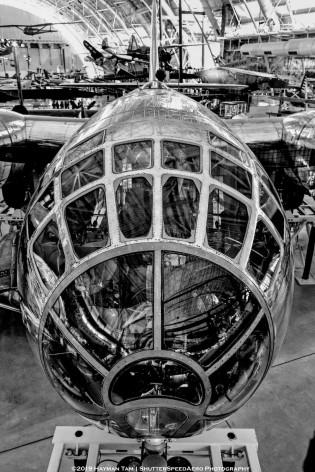 @ Chantilly, VA
@ Chantilly, VA
August 2018
One of the centerpieces of the collection at the Steven F. Udvar-Hazy Center is the Enola Gay. The Boeing B-29 Superfortress is a four-engine propeller-driven heavy bomber flown operationally during World War II and the Korean War. It was one of the largest aircraft operational during World War II and featured state-of-the-art technology. Innovations introduced included a pressurized cabin, dual-wheeled, tricycle landing gear, and an analog computer-controlled fire-control system directing four remote machine gun turrets. The need for pressurization in the cockpit area also led to the B-29 being one of very few American combat aircraft of World War II to have a unique stepless cockpit design, without a separate windscreen for the pilots. The need for pressurization in the cockpit area also led to the B-29 being one of very few American combat aircraft of World War II to have a stepless cockpit design, without a separate windscreen for the pilots. Seventeen production aircraft were modified as atomic weapon-capable Silverplate aircraft. Silverplate modifications included fuel-injected engines, reversible-pitch propellers, and pneumatic actuators for rapid opening and closing of bomb bay doors. Weight of the aircraft was reduced by removing all gun turrets and armor plating, resulting in a significant increase in performance over standard B-29s. On August 6, 1945, this Martin-built B-29-45-MO dropped the first atomic weapon used in combat on Hiroshima, Japan. First flown in 1994, they remained in service until 1960. The Royal Air Force even flew the B-29 as the Washington until 1954. Of the 3,970 B-29s built, 26 complete B-29’s are currently on display in the United States. Fuji X-E2s w/18-55mm.
